
Serra de Sintra: Enchanted Hills of Portugal
Discover the magical hills of Serra de Sintra in Portugal, where historic palaces, lush forests, and charming villages create an unforgettable travel experience.
Serra de Sintra, nestled on the Portuguese Riviera, is an enchanting range of hills that offers a blend of natural beauty and historical allure. This lush, green landscape is dotted with fairytale palaces, mystical gardens, and ancient castles, making it a dream destination for history buffs and nature lovers alike. One of the most iconic sites in Serra de Sintra is the Pena Palace, a colorful and whimsical palace that sits atop a hill offering panoramic views of the surrounding area. The palace's unique blend of Gothic, Manueline, and Moorish architectural styles creates a magical atmosphere that feels straight out of a storybook. Nearby, the Moorish Castle provides a glimpse into the region's medieval past with its ancient stone walls and breathtaking vistas. The town of Sintra itself is a UNESCO World Heritage site, filled with charming cobblestone streets, traditional Portuguese houses, and quaint shops and cafes. Visitors can explore the historic center, visit the National Palace, or simply enjoy a leisurely stroll through the town's picturesque streets. For those seeking a deeper connection with nature, the Sintra-Cascais Natural Park offers a network of scenic trails that wind through dense forests and lead to hidden gems like the Monserrate Palace and the mysterious Quinta da Regaleira. Serra de Sintra is not just a feast for the eyes; it also offers delightful culinary experiences. Local eateries serve up traditional Portuguese dishes, including fresh seafood, pastries like the famous travesseiros, and fine local wines. Whether you're a history enthusiast, a nature lover, or a foodie, Serra de Sintra promises an unforgettable experience that will leave you enchanted and yearning for more.
Local tips in Serra de Sintra
- Wear comfortable shoes as you'll be doing a lot of walking, especially in hilly areas.
- Visit Pena Palace early in the morning or late in the afternoon to avoid crowds.
- Bring a light jacket, as the weather in the hills can be cooler than in the town.
- Use public transportation or a tuk-tuk to get around, as parking can be difficult.
- Try the local pastries, especially travesseiros and queijadas, at a traditional bakery.
Serra de Sintra: Enchanted Hills of Portugal
Serra de Sintra, nestled on the Portuguese Riviera, is an enchanting range of hills that offers a blend of natural beauty and historical allure. This lush, green landscape is dotted with fairytale palaces, mystical gardens, and ancient castles, making it a dream destination for history buffs and nature lovers alike. One of the most iconic sites in Serra de Sintra is the Pena Palace, a colorful and whimsical palace that sits atop a hill offering panoramic views of the surrounding area. The palace's unique blend of Gothic, Manueline, and Moorish architectural styles creates a magical atmosphere that feels straight out of a storybook. Nearby, the Moorish Castle provides a glimpse into the region's medieval past with its ancient stone walls and breathtaking vistas. The town of Sintra itself is a UNESCO World Heritage site, filled with charming cobblestone streets, traditional Portuguese houses, and quaint shops and cafes. Visitors can explore the historic center, visit the National Palace, or simply enjoy a leisurely stroll through the town's picturesque streets. For those seeking a deeper connection with nature, the Sintra-Cascais Natural Park offers a network of scenic trails that wind through dense forests and lead to hidden gems like the Monserrate Palace and the mysterious Quinta da Regaleira. Serra de Sintra is not just a feast for the eyes; it also offers delightful culinary experiences. Local eateries serve up traditional Portuguese dishes, including fresh seafood, pastries like the famous travesseiros, and fine local wines. Whether you're a history enthusiast, a nature lover, or a foodie, Serra de Sintra promises an unforgettable experience that will leave you enchanted and yearning for more.
When is the best time to go to Serra de Sintra?
Iconic landmarks you can’t miss
National Palace of Pena
Discover the vibrant beauty of the National Palace of Pena, a UNESCO World Heritage site that combines history, art, and stunning landscapes in Sintra, Portugal.
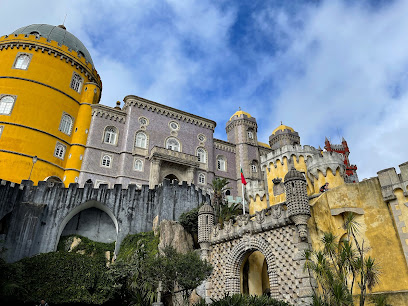
Quinta da Regaleira
Discover the enchanting Quinta da Regaleira in Sintra, a captivating blend of history, architecture, and lush gardens that will leave you spellbound.

Sintra National Palace
Explore the grandeur of Sintra National Palace, a UNESCO World Heritage site showcasing Portugal's royal history and stunning architecture.

The Moorish Castle
Discover the Moorish Castle in Sintra, Portugal – a historical landmark offering breathtaking views and a glimpse into the region's rich heritage.

Castelo dos Mouros
Explore the majestic Castle of the Moors, a historical gem in Sintra, Portugal, offering breathtaking views and a deep dive into the region's rich history.

Park and Palace of Monserrate
Discover the enchanting Park and Palace of Monserrate, a stunning blend of nature and history in the heart of Sintra, Portugal.

High Cross
Discover High Cross in Sintra: A historic monument offering breathtaking views and a serene escape into nature's beauty.

Parques de Sintra-Monte da Lua (PSML)
Experience the magical landscapes and historical wonders of Parques de Sintra-Monte da Lua, a UNESCO World Heritage gem near Lisbon.

Historic Center
Explore the magical Historic Center of Sintra, a UNESCO World Heritage site filled with stunning palaces, lush gardens, and rich cultural heritage.

Temple of Columns
Explore the stunning Temple of Columns in Sintra, a breathtaking blend of nature and history, perfect for photography and serene strolls.

The Warrior Statue
Discover The Warrior Statue in Sintra, a majestic monument celebrating bravery amidst stunning landscapes and rich cultural heritage.

Pelourinho de Sintra
Explore the iconic Pelourinho de Sintra, a historical landmark steeped in rich culture and breathtaking beauty in the heart of Portugal.

Ruínas da Capela de Monserrate
Explore the captivating Ruínas da Capela de Monserrate in Sintra, where Gothic architecture meets stunning natural beauty in a historic setting.
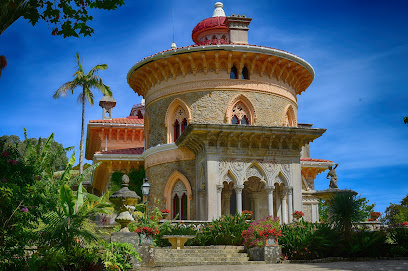
Torre do Relógio
Discover the architectural beauty and historical significance of Torre do Relógio, a captivating landmark in the heart of Sintra, Portugal.

Dr. Gregorio Almeida Statue
Discover the Dr. Gregorio Almeida Statue in Sintra, a historical landmark celebrating local heritage amidst stunning landscapes.

Unmissable attractions to see
Feira Internacional de Lisboa
Experience the dynamic energy of Lisbon at the Feira Internacional de Lisboa, a premier convention center showcasing culture, innovation, and global exchange.

Parque dos Poetas
Explore the beauty of Parque dos Poetas in Oeiras, where poetry meets nature in a tranquil park filled with sculptures and lush landscapes.

Lisbon Earthquake 1755
Immerse yourself in the history of Lisbon's resilience at the Earthquake Museum, exploring the profound effects of the 1755 disaster.

Tropical Botanical Garden
Explore the Tropical Botanical Garden in Lisbon, a lush oasis of exotic plants and tranquil pathways perfect for nature lovers and relaxation seekers.

Telecabine Lisbon - North Station
Experience breathtaking aerial views of Lisbon's stunning landscapes and iconic landmarks at Telecabine Lisbon - North Station.

Olga Cadaval Cultural Center
Discover the artistic heart of Sintra at the Olga Cadaval Cultural Center, a vibrant venue for music, theater, and cultural events.

Miradouro da Penha de França
Experience breathtaking views of Lisbon and the Tagus River at Miradouro da Penha de França, a serene scenic spot filled with charm.

Quinta da Ribafria
Explore the serene gardens and rich heritage of Quinta da Ribafria, a captivating attraction in Sintra, Portugal, offering a perfect escape into nature.

Praça de São Paulo
Discover the vibrant history and culture of Praça de São Paulo, a must-visit landmark in the heart of Lisbon.

Museu da Água
Explore the Museu da Água in Lisbon: A captivating journey into the history and science of water management in the heart of the city.

Monument Deads of Great War
Discover Lisbon's Monument to the Fallen of the Great War, a poignant tribute blending history, reflection, and vibrant city life.

Forte de Santo António da Barra
Explore the historical charm and stunning coastal views at Forte de Santo António da Barra, a must-visit fortress in Estoril, Portugal.

Vertente Natural
Discover unforgettable adventures at Vertente Natural, the ultimate destination for outdoor activities, boat tours, and breathtaking marine experiences in Sesimbra.

Páginas Tantas
Explore the vibrant jazz scene in Lisbon at Páginas Tantas, where live music and a cozy bar atmosphere create unforgettable nights.
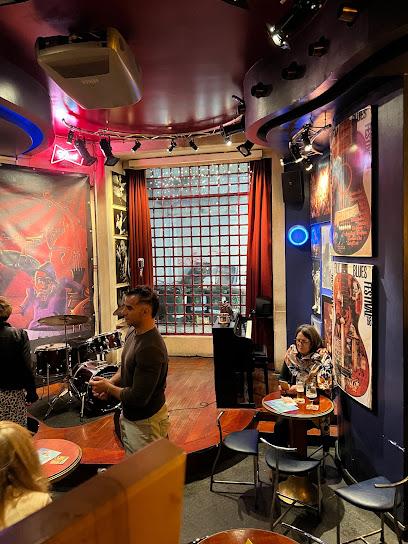
Feira dos Tecidos
Discover the vibrant world of textiles at Feira dos Tecidos in Lisbon, where unique fabrics and local culture come together in a colorful shopping experience.

Essential places to dine
Incomum
Experience the culinary artistry at Incomum in Sintra - where traditional flavors meet modern creativity in every dish.

Apeadeiro
Experience authentic Portuguese cuisine at Apeadeiro in Sintra, where every meal tells a story amidst breathtaking landscapes.

Metamorphosis
Experience the enchanting flavors of Portugal at Metamorphosis, a premier restaurant in Sintra offering innovative dishes in a cozy setting.

Tascantiga
Experience authentic Portuguese cuisine at Tascantiga in Sintra, where every dish tells a story and every bite delights.

Romaria de Baco
Discover the essence of Portugal at Romaria de Baco - where authentic flavors meet warm hospitality in Sintra's historic heart.

Sabores de Sintra
Experience authentic Portuguese cuisine at Sabores de Sintra - where tradition meets modernity amidst stunning landscapes.

Dom Pipas
Experience authentic Portuguese cuisine in the heart of Sintra at Dom Pipas – where tradition meets flavor.

Pic Nic I
Discover the vibrant flavors of India and Italy at Pic Nic I in Sintra – where every meal tells a story.

Sintra Terrace
Experience exquisite dining at Sintra Terrace with stunning views and authentic Portuguese cuisine amidst the enchanting landscapes of Sintra.
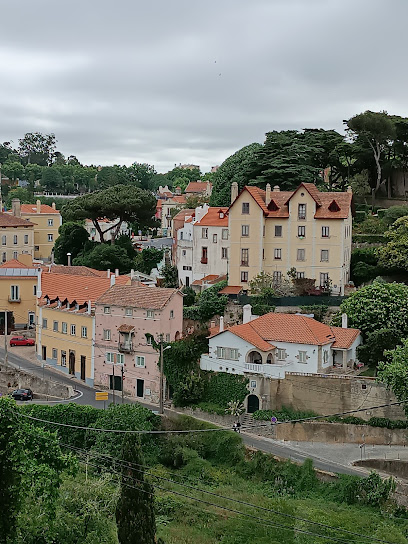
Casa das Minas
Discover the flavors of Portugal at Casa das Minas in Sintra – where authentic cuisine meets affordability.

Cantinho da Vila
Savor the essence of Portugal at Cantinho da Vila - a culinary gem in Sintra that celebrates traditional flavors.

Adega do Saraiva
Experience the authentic flavors of Portuguese cuisine at Adega do Saraiva in Sintra - a must-visit culinary destination for every traveler.

Fatto da Cláudio Coelho
Experience authentic Italian cuisine at Fatto da Cláudio Coelho in Sintra—where tradition meets flavor amidst breathtaking surroundings.

Dona Maria
Discover Dona Maria in Sintra - where traditional Portuguese cuisine meets modern culinary artistry amidst stunning views.
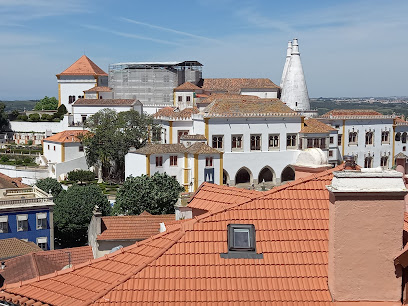
Restaurante Mira Serra
Experience authentic Portuguese cuisine at Restaurante Mira Serra in Sintra, where tradition meets breathtaking scenery.
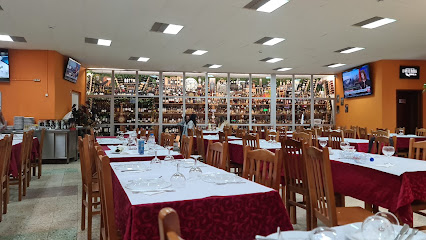
Markets, malls and hidden boutiques
Alegro Sintra
Discover shopping, dining, and entertainment at Alegro Sintra, where every visit offers a unique experience in a modern setting.

Sintra Retail Park
Explore Sintra Retail Park, your ultimate shopping destination in Rio de Mouro with diverse stores, dining options, and a welcoming atmosphere.

Decathlon Sintra
Discover Decathlon Sintra for all your sporting goods needs while enjoying the scenic beauty and adventure opportunities in Sintra.

ALE HOP Sintra
Explore ALE HOP Sintra for unique souvenirs and local gifts that capture the essence of this magical Portuguese town.

Sintra Centre
Explore Sintra Centre, the ultimate souvenir store offering local crafts, unique gifts, and authentic Portuguese products in the heart of Sintra.

De Mão em Mão
Explore a vintage paradise in Sintra at De Mão em Mão, where unique second-hand clothing meets a cozy coffee shop atmosphere.

Toranja - Sintra
Discover Toranja in Sintra - Your ultimate destination for top-notch art supplies and inspiration in a picturesque setting.

Grab&Go - Sintra
Discover Grab&Go, the ultimate kiosk in Sintra, offering delicious snacks and refreshing drinks amidst stunning landscapes.

Ishtar - Artes Mágicas
Discover a magical bookstore in Sintra, offering an enchanting collection of literature and artisanal crafts that capture the spirit of Portugal.

Xandra Papelaria Tabacaria
Discover the charm of Xandra Papelaria Tabacaria in Sintra, where stationery meets souvenirs in a delightful shopping experience.

Atelier Tchonya Badginski
Explore Atelier Tchonya Badginski in Sintra for exquisite designer fashion accessories that embody local craftsmanship and style.

Páteo das Laranjas
Discover the essence of Portuguese flavors at Páteo das Laranjas, a charming liquor store in the heart of Sintra, offering fine wines and spirits.
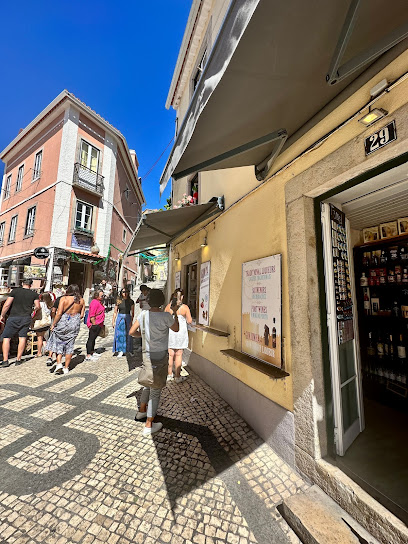
Maria Saudade
Discover the heart of Portuguese craftsmanship at Maria Saudade in Sintra, where every handcrafted piece tells a story.

Loja Tradições - Artesanato e Depósito de Bagagem
Explore Loja Tradições in Sintra for unique handicrafts, clothing, and souvenirs that embody the spirit of Portugal.

H'art Portugal
Explore H'art Portugal, where unique, locally crafted souvenirs reflect the rich culture of Sintra, making perfect keepsakes for your travels.

Essential bars & hidden hideouts
Casa do Fauno
Discover Casa do Fauno in Sintra – a delightful pub and bookstore fusion, perfect for unwinding with a drink and a good book.

Bar Saloon Cintra
Discover the lively atmosphere of Bar Saloon Cintra in Lisbon, where great drinks and delicious food meet vibrant nightlife.
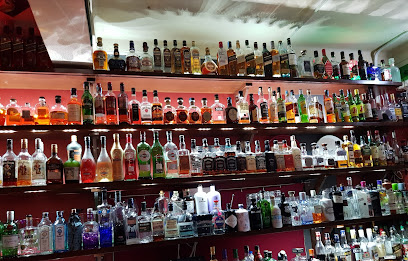
Tasco do Strauss
Discover the flavors of Portugal at Tasco do Strauss, a charming tapas bar in Sintra offering an unforgettable culinary experience.

Aldeia Café
Discover the charm of Aldeia Café in Sintra, where delicious cuisine meets a cozy atmosphere, perfect for a relaxing break during your travels.

Villa Craft Beer & Bread
Experience the best of Sintra at Villa Craft Beer & Bread, where artisanal craft beers meet freshly baked bread in a cozy atmosphere.

ZID lounge Bar
Experience vibrant nightlife at ZID Lounge Bar in Sintra, where exceptional drinks and an inviting atmosphere await.

Salla de Estar
Experience the vibrant nightlife of Sintra at Salla de Estar, offering delicious snacks and a wide selection of drinks in a lively atmosphere.
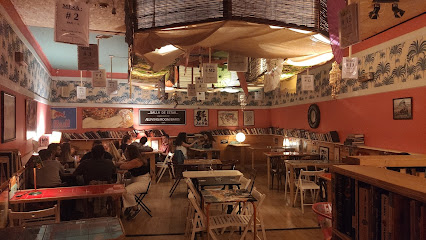
Bar Fonte da Pipa
Experience the vibrant ambiance and delightful drinks at Bar Fonte da Pipa, a must-visit bar in the enchanting town of Sintra.
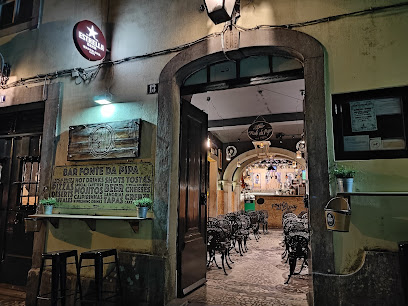
Cantinho do Lord Byron
Discover the charm of Cantinho do Lord Byron in Sintra, where exceptional tapas and drinks meet a cozy atmosphere.

4 Caravelas Sintra
Discover the enchanting 4 Caravelas Sintra, a cocktail bar offering exquisite drinks and a lively atmosphere in the heart of Sintra, Portugal.

Taverna do Município
Experience the vibrant flavors of Sintra at Taverna do Município, a delightful tapas bar and restaurant offering a taste of local culinary heritage.

Tapas & wine
Explore the authentic taste of Portugal at Tapas & Wine, where delightful tapas and exquisite wines come together in the heart of Sintra.

Botica Saloia
Discover the authentic flavors of Portugal at Botica Saloia, a charming tapas and wine bar in the heart of Sintra.

Ferraria Taproom
Experience the best of craft beer and delicious tapas at Ferraria Taproom, a cozy brewpub in the heart of Sintra, Portugal.

The Old Bull Bar&Lounge
Discover the enchanting ambiance of The Old Bull Bar&Lounge in Sintra, where local culture meets a relaxing retreat for tourists.

Local Phrases about Serra de Sintra
-
- HelloOlá
[oh-lah] - GoodbyeAdeus
[ah-deh-oosh] - YesSim
[seem] - NoNão
[now] - Please/You're welcomePor favor/De nada
[poor fah-vohr/deh nah-dah] - Thank youObrigado
[oh-bree-gah-doo] - Excuse me/SorryCom licença/Desculpe
[kohm lee-sen-sah/deh-skool-peh] - How are you?Como está?
[koh-moh ehs-tah] - Fine. And you?Bem. E você?
[behn/eh voh-seh] - Do you speak English?Fala inglês?
[fah-lah een-glehz] - I don't understandNão entendo
[now ehn-tehn-doo]
- HelloOlá
-
- I'd like to see the menu, pleaseGostaria de ver o menu, por favor
[goh-stah-ree-ah deh vehr ooh meh-noo, poor fah-vohr] - I don't eat meatNão como carne
[now koh-moh kahr-neh] - Cheers!Saúde!
[sow-deh] - I would like to pay, pleaseGostaria de pagar, por favor
[goh-stah-ree-ah deh pah-gahr, poor fah-vohr]
- I'd like to see the menu, pleaseGostaria de ver o menu, por favor
-
- Help!Ajuda!
[ah-zhoo-dah] - Go away!Vai embora!
[vah-ee ehm-boh-rah] - Call the Police!Chame a Polícia!
[shah-meh ah poh-lee-see-ah] - Call a doctor!Chame um médico!
[shah-meh oong meh-dee-koo] - I'm lostEstou perdido
[eh-stoh pehr-dee-doo] - I'm illEstou doente
[eh-stoh doo-ehn-teh]
- Help!Ajuda!
-
- I'd like to buy...Gostaria de comprar...
[goh-stah-ree-ah deh kohm-prahr] - I'm just lookingEstou só a ver
[eh-stoh soh ah vehr] - How much is it?Quanto custa?
[kwan-toh koosh-tah] - That's too expensiveIsso é muito caro
[ee-soh eh moo-ee-tooh kah-roo] - Can you lower the price?Pode baixar o preço?
[poh-deh bahy-shahr ooh prey-soo]
- I'd like to buy...Gostaria de comprar...
-
- What time is it?Que horas são?
[keh oh-rahz sah-ooh] - It's one o'clockÉ uma hora
[eh oo-mah oh-rah] - Half past (10)Meia dez
[may-ah dehsh] - MorningManhã
[mah-nyah] - AfternoonTarde
[tahr-deh] - EveningNoite
[noy-teh] - YesterdayOntem
[awn-tehm] - TodayHoje
[oh-zheh] - TomorrowAmanhã
[ah-mah-nyah] - 1Um
[oom] - 2Dois
[doh-ees] - 3Três
[trehs] - 4Quatro
[kwah-troh] - 5Cinco
[seen-koh] - 6Seis
[saysh] - 7Sete
[seh-teh] - 8Oito
[oy-toh] - 9Nove
[noh-veh] - 10Dez
[dehsh]
- What time is it?Que horas são?
-
- Where's a/the...?Onde fica o/a...?
[ohn-deh fee-kah ooh/ah] - What's the address?Qual é o endereço?
[kwahl eh ooh ehn-deh-reh-soo] - Can you show me (on the map)?Pode mostrar-me (no mapa)?
[poh-deh mohs-trahr-meh (noo mah-pah)] - When's the next (bus)?Quando é o próximo (autocarro)?
[kwan-doo eh ooh proh-ksee-moh (ow-toh-kah-roo)] - A ticket (to ....)Um bilhete (para ...)
[oom beel-yeh-teh (pah-rah)]
- Where's a/the...?Onde fica o/a...?
History of Serra de Sintra
-
The Serra de Sintra boasts a rich prehistoric heritage, with archaeological findings dating back to the Paleolithic era. The region's natural caves, such as the Gruta do Colaride, have yielded numerous artifacts, including flint tools and pottery fragments, suggesting early human habitation and activity.
-
During the Roman period, Sintra was known as 'Cynthia,' named after the moon goddess. It was an important sanctuary and leisure destination for the Roman elite. Numerous ruins, including the remnants of Roman roads and villas, bear testimony to this era. The Penha Verde estate, with its Roman-inspired gardens and structures, is a notable example.
-
The Moors left an indelible mark on the Serra de Sintra after they conquered the Iberian Peninsula in the 8th century. The Castelo dos Mouros (Moorish Castle), perched high on a hilltop, is a striking reminder of their presence. This fortress, with its formidable stone walls and strategic location, provided a critical defense point against invading Christian forces.
-
In 1147, King Afonso I of Portugal successfully captured Sintra from the Moors, marking a significant milestone in the Christian Reconquest. The region's Christianization led to the construction of several churches and monasteries, including the Convent of the Capuchos, known for its austere beauty and harmonious integration into the surrounding landscape.
-
During the Age of Discoveries in the 15th and 16th centuries, Sintra became a favored retreat for Portuguese royalty and nobility. The construction of the Palácio Nacional de Sintra, with its distinctive twin chimneys and blend of Gothic, Manueline, and Mudéjar styles, exemplifies the era's architectural grandeur and cultural fusion.
-
The 19th century saw Sintra transform into a center of Romanticism, attracting artists, writers, and travelers enchanted by its mystical landscapes and historical allure. The Palácio da Pena, a whimsical and colorful palace commissioned by King Ferdinand II, epitomizes this period. Its eclectic architecture and lush gardens reflect the Romantic ideal of harmony between nature and human creativity.
-
In 1995, the cultural landscape of Sintra was designated a UNESCO World Heritage Site, recognizing its unique blend of natural and architectural beauty. Today, the Serra de Sintra continues to be a cherished destination for visitors worldwide, offering a rich tapestry of history, culture, and natural splendor.
Serra de Sintra Essentials
-
Serra de Sintra is located approximately 30 kilometers west of Lisbon, Portugal. The nearest international airport is Humberto Delgado Airport (Lisbon Airport). From Lisbon, you can take a direct train from Rossio Station to Sintra, which takes about 40 minutes. Alternatively, you can drive or take a taxi, which will take roughly 30-40 minutes depending on traffic.
-
Once in Sintra, the town is best explored on foot due to its narrow streets and hilly terrain. For longer distances or to visit specific sites like the Pena Palace or the Moorish Castle, you can use the local buses. The Scotturb bus service offers routes that cover the main attractions. Taxis and ride-sharing services like Uber are also available. Renting a car is an option, but parking can be challenging in the more tourist-heavy areas.
-
The official currency in Portugal is the Euro (EUR). Credit and debit cards are widely accepted in hotels, restaurants, and shops in Sintra. However, it is advisable to carry some cash for smaller establishments and for use in local markets. ATMs are plentiful in Sintra, but withdrawing cash in advance from Lisbon can save time.
-
Sintra is generally a safe destination for tourists. However, like any popular tourist spot, it is wise to take standard precautions. Be mindful of pickpockets, especially in crowded areas and on public transportation. Avoid poorly lit and deserted areas at night. There are no specific high-crime areas targeting tourists in Sintra, but staying vigilant is always a good practice.
-
In case of emergency, dial 112 for immediate assistance, which is the European emergency number for police, fire, and medical services. Sintra has a local police station and medical facilities. It is recommended to have travel insurance that covers medical emergencies. Pharmacies are available for minor health issues and over-the-counter medications.
-
Fashion: Do wear comfortable shoes as Sintra is hilly and involves a lot of walking. Dress in layers since the weather can change rapidly. Avoid wearing beachwear in town. Religion: Do respect local customs, especially when visiting religious sites. Cover your shoulders and knees when entering churches and monasteries. Public Transport: Do be courteous and give up your seat for elderly passengers. Don’t eat or drink on public transport. Greetings: Do greet people with a friendly 'Bom dia' (Good morning) or 'Boa tarde' (Good afternoon). A handshake is common when meeting someone for the first time. Eating & Drinking: Do try local delicacies like queijadas and travesseiros. Don’t rush through meals; dining is a leisurely activity in Portugal.
-
To experience Sintra like a local, take a stroll through the historic center and visit local cafes and markets. Engage with locals who are often friendly and willing to share insights about their town. Don’t miss the opportunity to explore lesser-known sites like the Monserrate Palace and the Capuchos Convent. For a unique experience, visit the Quinta da Regaleira and explore its mystical gardens and underground tunnels.
Trending Landmarks in Serra de Sintra
-
National Palace of Pena
-
Quinta da Regaleira
-
Sintra National Palace
-
The Moorish Castle
-
Castelo dos Mouros
-
Park and Palace of Monserrate
-
High Cross
-
Parques de Sintra-Monte da Lua (PSML)
-
Historic Center
-
Temple of Columns
-
The Warrior Statue
-
Pelourinho de Sintra
-
Ruínas da Capela de Monserrate
-
Torre do Relógio
-
Dr. Gregorio Almeida Statue
Nearby Cities to Serra de Sintra
-
Things To Do in Cascais
-
Things To Do in Lisbon
-
Things To Do in Setúbal
-
Things To Do in Caldas da Rainha
-
Things To Do in Viseu
-
Things To Do in Tomar
-
Things To Do in Évora
-
Things To Do in Coimbra
-
Things To Do in Badajoz
-
Things To Do in Aveiro
-
Things To Do in Faro
-
Things To Do in Porto
-
Things To Do in Huelva
-
Things To Do in Lamego
-
Things To Do in Guimarães












